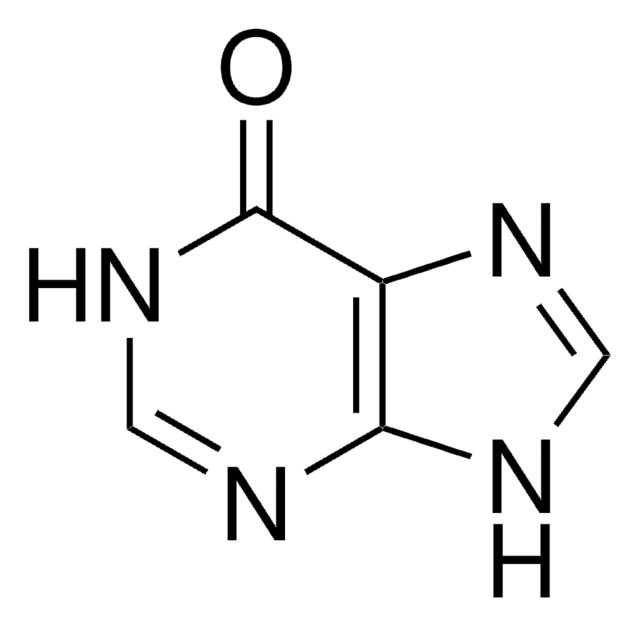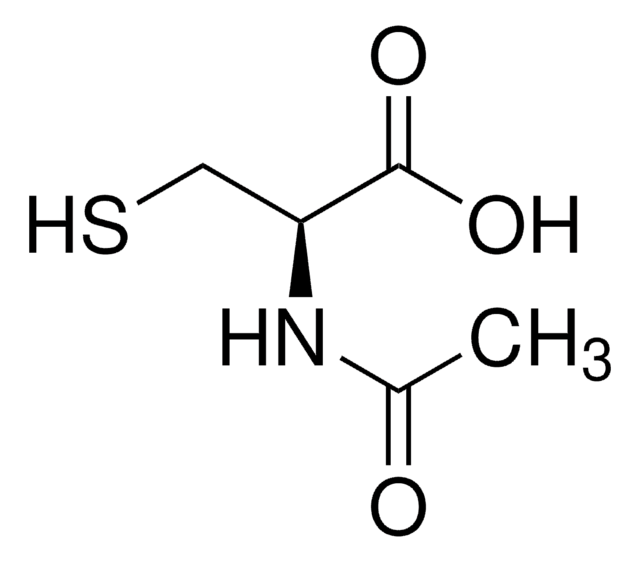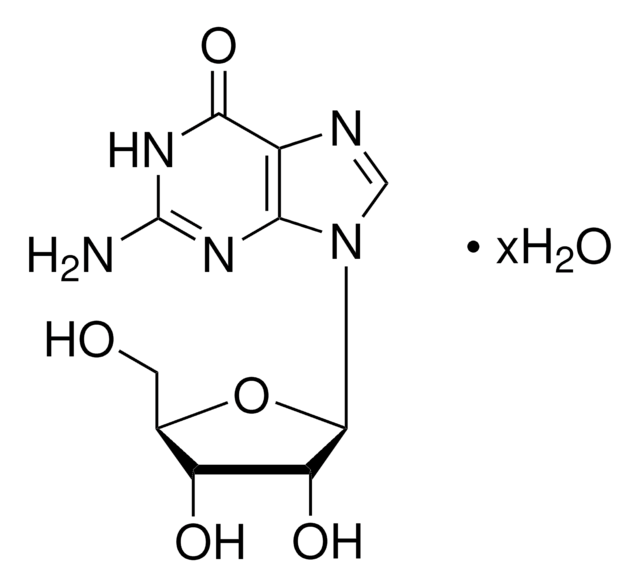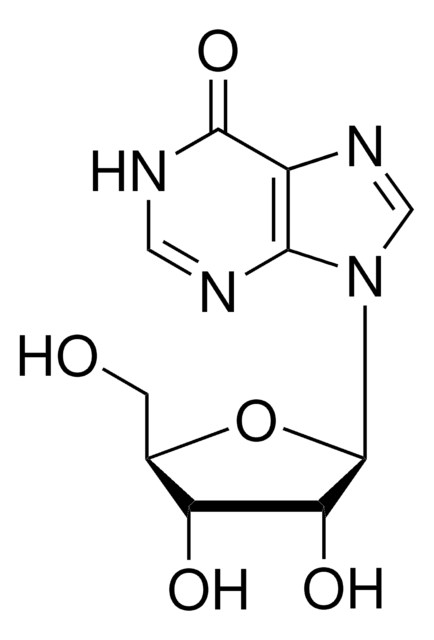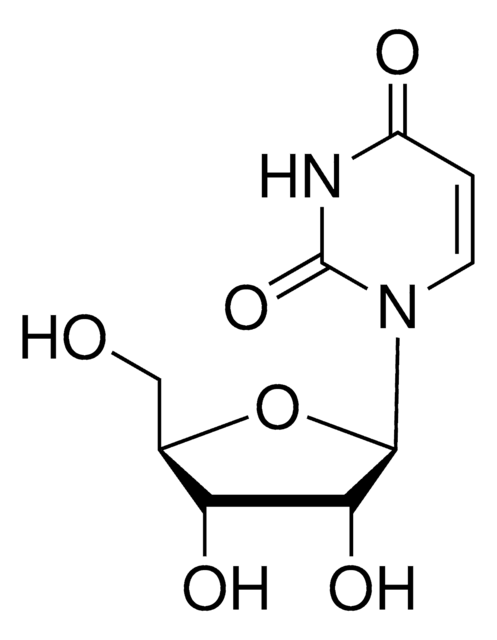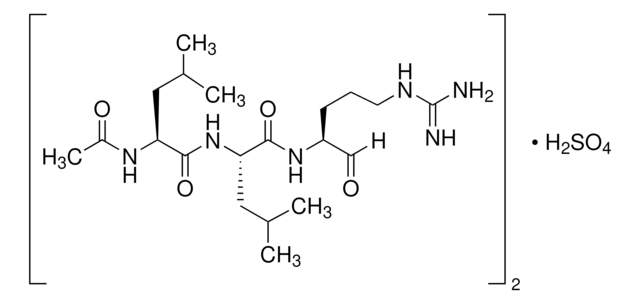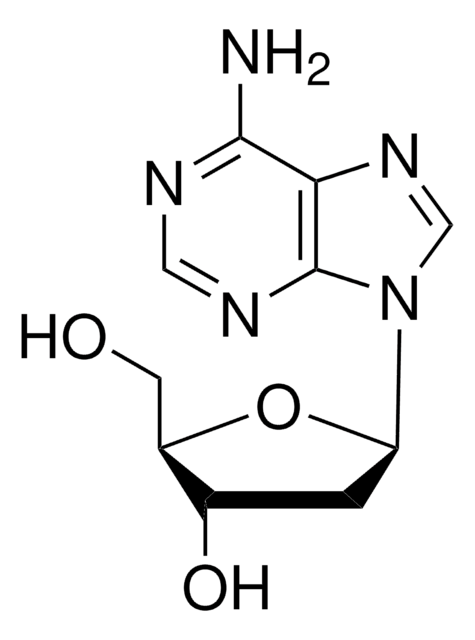P4653
Phosphatase, Alkaline from bovine kidney
lyophilized powder, ≥5 units/mg protein (Activity determined in diethanolamine buffer, pH 9.8)
Synonym(s):
Alkaline phosphatase, Orthophosphoric-monoester phosphohydrolase (alkaline optimum)
Sign Into View Organizational & Contract Pricing
All Photos(1)
About This Item
Recommended Products
form
lyophilized powder
specific activity
≥5 units/mg protein (Activity determined in diethanolamine buffer, pH 9.8)
composition
Protein, ~35% biuret
storage temp.
−20°C
Application
Alkaline phosphatase is used for conjugation to antibodies and other proteins for ELISA, Western blotting, and histochemical detection. It is routinely used to dephosphorylate proteins, such as casein, and nucleic acids. It may be used for protein labeling when high sensitivity is required. Alkaline phosphatase may be also be used to dephosphorylate the 5′-termini of DNA or RNA to prevent self-ligation. DNA or RNA can also be tagged with radiolabeled phosphate (via T4 polynucleotide kinase) after dephosphorylation with alkaline phosphatase.. Product P4653 is from bovine kidney and is provided as a lyophilized powder containing Tris-citrate buffer salts.
Biochem/physiol Actions
Alkaline phosphatase dephosphorylates proteins and nucleic acids.
Unit Definition
One unit will hydrolyze 1 μmole of 4-nitrophenyl phosphate per minute at pH 9.8 at 37 °C. Previously sold in "glycine" units.
Physical form
Lyophilized powder containing Tris-citrate buffer salts
Analysis Note
Assays in Tris buffer, pH 10.2 give activity approx. 2X that in the glycine buffer system. Assays in diethanolamine buffer, pH 9.8 give activity approx. 5X that of the glycine buffer system.
Protein determined by biuret
inhibitor
Product No.
Description
Pricing
Signal Word
Danger
Hazard Statements
Precautionary Statements
Hazard Classifications
Resp. Sens. 1
Storage Class Code
11 - Combustible Solids
WGK
WGK 1
Flash Point(F)
Not applicable
Flash Point(C)
Not applicable
Personal Protective Equipment
dust mask type N95 (US), Eyeshields, Gloves
Regulatory Information
新产品
Choose from one of the most recent versions:
Certificates of Analysis (COA)
Lot/Batch Number
Don't see the Right Version?
If you require a particular version, you can look up a specific certificate by the Lot or Batch number.
Already Own This Product?
Find documentation for the products that you have recently purchased in the Document Library.
M Nemir et al.
The Journal of biological chemistry, 264(30), 18202-18208 (1989-10-25)
We have reported previously that the 69-kDa major phosphoprotein, secreted by normal rat kidney (NRK) cells, is osteopontin, a glycosylated bone matrix protein. Here we show that this 69-kDa osteopontin is secreted by NRK cells in both phosphorylated (pp69) and
Naomi Ofer et al.
The Journal of biological chemistry, 288(16), 11287-11293 (2013-03-09)
Protein degradation via prokaryotic ubiquitin-like protein (Pup) tagging is conserved in bacteria belonging to the phyla Actinobacteria and Nitrospira. The physiological role of this novel proteolytic pathway is not yet clear, although in Mycobacterium tuberculosis, the world's most threatening bacterial
Gouri Chaudhuri et al.
Indian journal of biochemistry & biophysics, 50(1), 64-71 (2013-04-27)
The hydrolysis of p-nitrophenyl phosphate (pNPP) by calf intestinal alkaline phosphatase (CIAP) was investigated with respect to kinetic parameters such as V(max), K(m) and K(cat) under varying pH, buffers, substrate concentration, temperature and period of incubation. Highest activity was obtained
George C Ziobro et al.
Journal of food protection, 76(5), 892-898 (2013-05-07)
Over the past 80 years, a variety of methods have been developed to detect underpasteurized or improperly pasteurized milks used in dairy products. Existing methods are hampered by duration of analysis, poor reproducibility, and in some cases the use of
I V Zverinskiĭ et al.
Biomeditsinskaia khimiia, 59(1), 90-96 (2013-05-09)
On the eighth day after ligation of the common bile duct in rats a significant increase in the serum content of total lipids, cholesterol bilirubin and ALT, alkaline phosphatase, and gamma-glutamyltransferase was observed. In the microsomal fraction there was a
Our team of scientists has experience in all areas of research including Life Science, Material Science, Chemical Synthesis, Chromatography, Analytical and many others.
Contact Technical Service